There are few things more pleasant to behold than the rich, vibrant colours of a British garden in early summer. It is a picture worthy of any of the great landscape artists.
In the UK, we are lucky to have the near perfect recipe of warmth, moisture, sunlight (sometimes at least!) and rich soil that, when successfully nurtured, results in an explosion of colour that British gardens are famous for the world over. However, whilst observing this masterpiece painting from the vantage point of our patio (G&T in hand), we can sometimes overlook the role that the ‘canvas’ of our botanical painting plays.
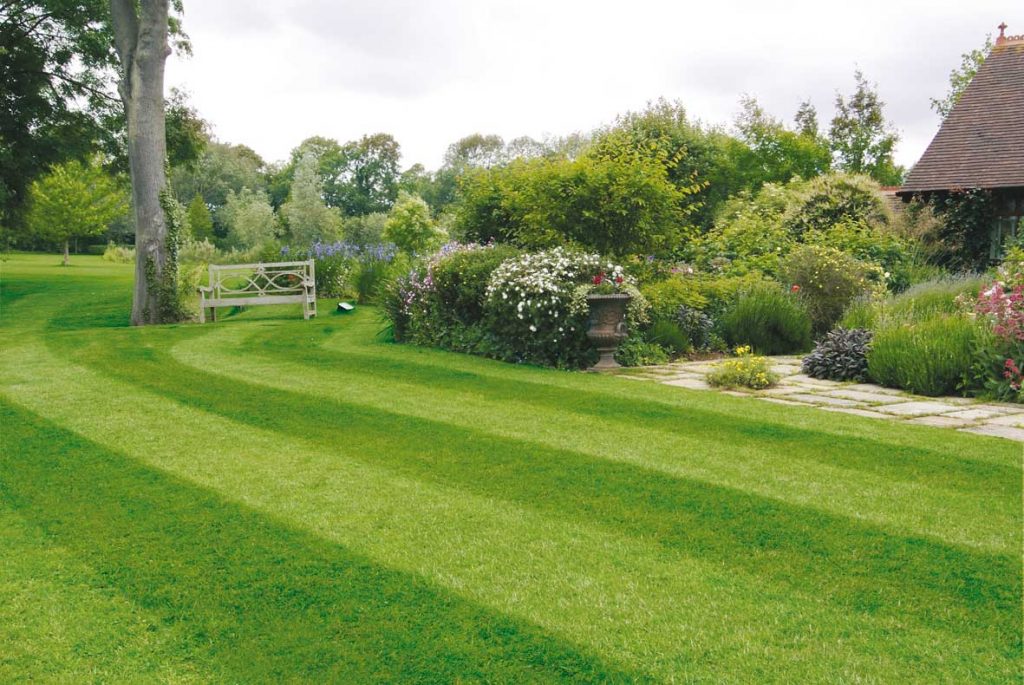
In the garden, unlike a painting where we brush colours onto a white canvas, we use the colour green as our backdrop. In the beds we plant shrubs and trees to provide a contrast to the colour bursts of the flower petals. Between the beds we lay grass to provide a flat landscape. It gives a sense of space, somewhere to play and relax and also frames the spectacle of the flower blooms. You won’t always notice a fine lawn when the flowers are in full display, but you will notice a sick one.
A brown, yellow or discoloured lawn upsets the balance and colour pallet of your garden display. Flowering weeds and rampant lawn moss will detract the eye away from your intended focal point. No matter how well your flowers bloom, something won’t look quite right. If you want an easy way to add more spectacle without the cost of redesigning and replanting, start with fixing your lawn. You will be amazed what a difference this can have to the overall look. Flowers will pop, beds will look sharper and the whole garden will seem cleaner and more refined.
There are several different treatments that help you achieve a more beautiful finish. However, there is one action that you can do in early Spring that can deliver a dramatic improvement to the quality of your lawn in just a few weeks.
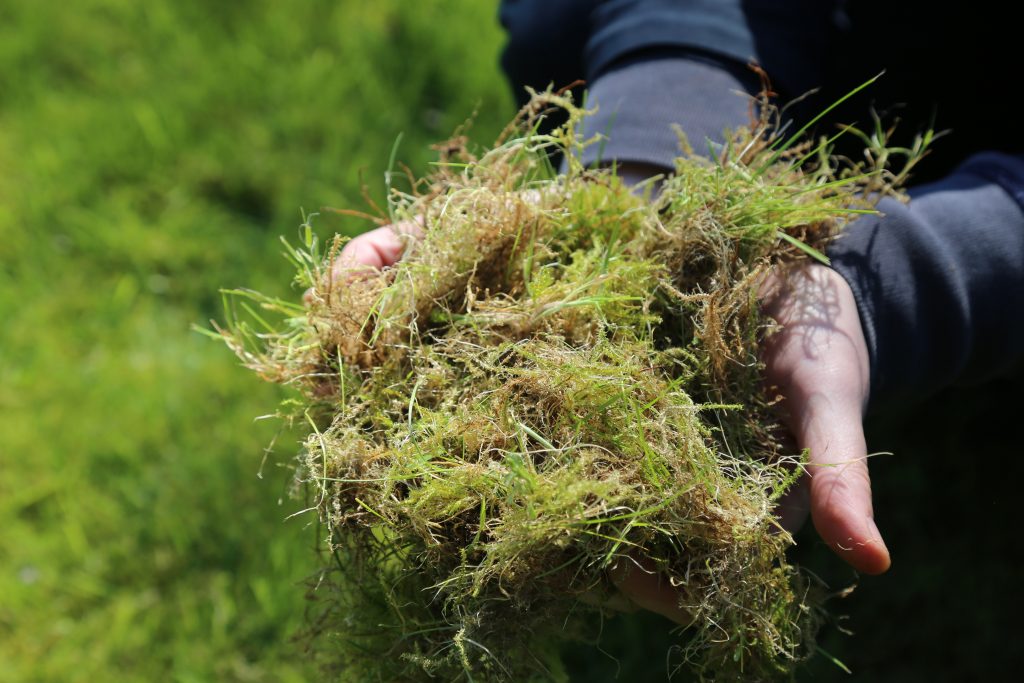
Scarification
We all agree that a Countax is a fine lawnmower. The Powered Grass Collector (PGC) does a better job than most at collecting grass clippings from the lawn. But even a PGC can’t collect 100% of what was cut – no lawnmower can. What’s more, some grass won’t play fair. Rather than growing straight upward, these ‘runners’ will grow laterally, weaving crossways along the ground.
A simple test is to walk to the middle of your lawn and gently rake the turf with your fingertips. You will likely be able to tease up long, straw like runners and a ‘thatch’ of dried, dead grass that sits on top of the soil surface.
If your knees are up to it, kneel down and take a really good look. You will likely see that the healthy blades of grass have had to jostle for position, weaving their way through this layer. You may very well see that amongst this carpet of brown, moss grows too. In fact, on this close inspection, you might be surprised at just how little grass there actually is in your lawn. It certainly looked green from the vantage point of your patio!
Thatch does occur naturally, and a small amount can be beneficial. It can protect the base of the grass plant from damage or disease. It can also help to preserve moisture levels during the drought of a long hot summer. Nature will try to take care of breaking down thatch, but when new grass grows quicker than the old grass can decompose, an excess will build up. A layer of a centimetre or more can kick start problems in your lawn.
It’s survival of the fittest. Just like in any gardening practice, the secret to success is to provide the plants you want to grow with the best possible conditions whilst making life difficult for weeds and disease. The thatch layer will eventually prevent rainwater from reaching the soil. It simply pools on top, sucked up by the fibrous layer or rotting material. This creates a near perfect habit for moss and fungal disease whilst starving the roots of healthy plants of the nutrients and moisture they need. This is why excess thatch and moss are so often seen together.
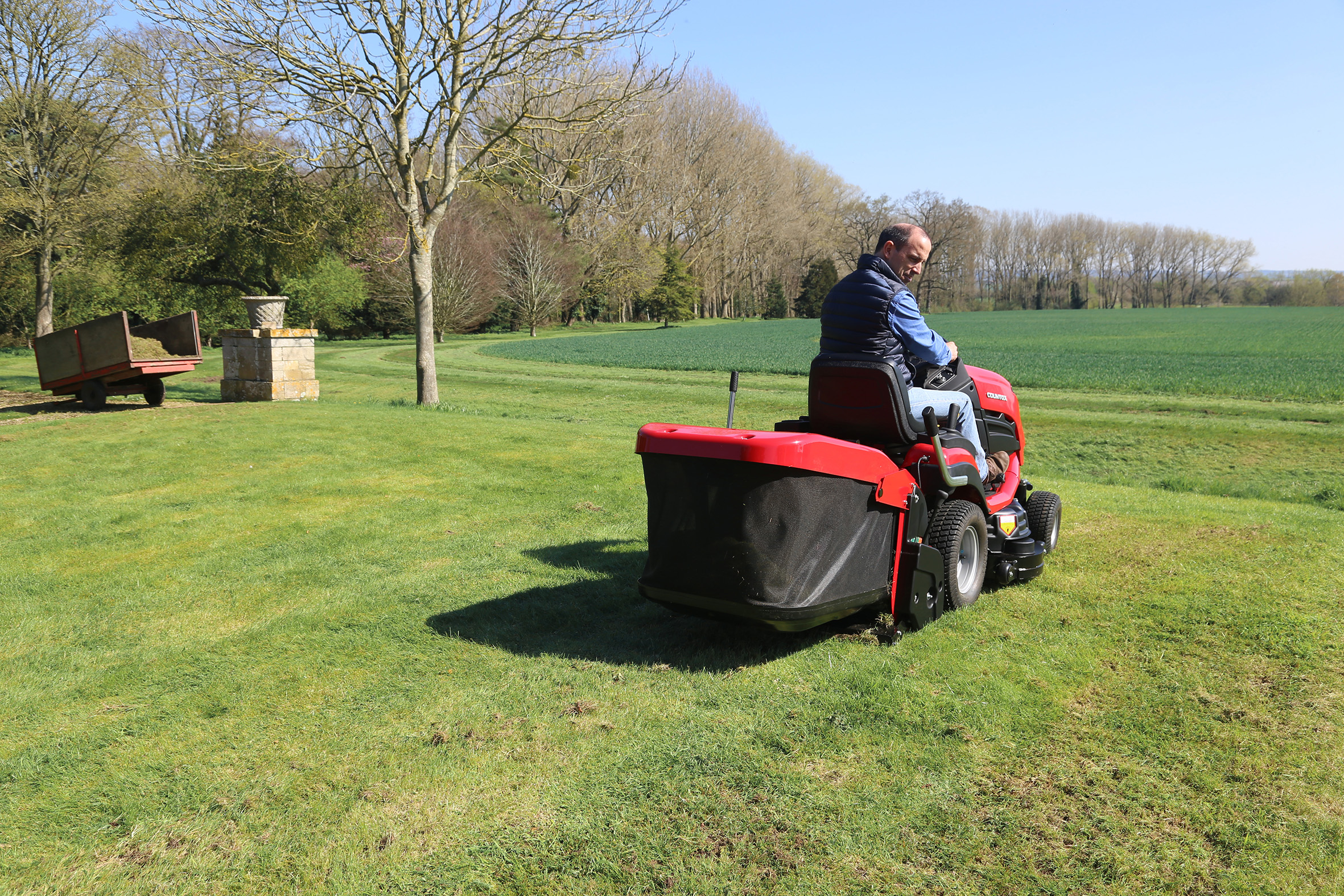
Scarifying is the process of mechanically removing thatch and moss from the surface of the lawn. It leaves behind just the healthy grass plants which now have the opportunity to flourish and spread out. In time, the healthy plants will prevail and when aerated and fed correctly, will green up into a thick, lush lawn.
There are various methods to achieve this from the back-breaking work of a lawn rake (not an option for anyone with a lawn larger than a postage stamp), through to a motorised, walk-behind dethatcher.
The problem with both these approaches is that, although they are effective at pulling up the thatch, the material will be laid on top of the lawn surface. Unless it can be fully collected, it will once again find its way back to the roots of the healthy plants. The other disadvantage to an owner of a larger lawn is just how time consuming this process is. Even a modest sized garden could take two full weekends to scarify.
As a Countax owner, you have an option available to you that others don’t have – a 76cm scarifier that attaches directly to your garden tractor. This may be in the form of a powered attachment available for A Series and older C/B Series models.
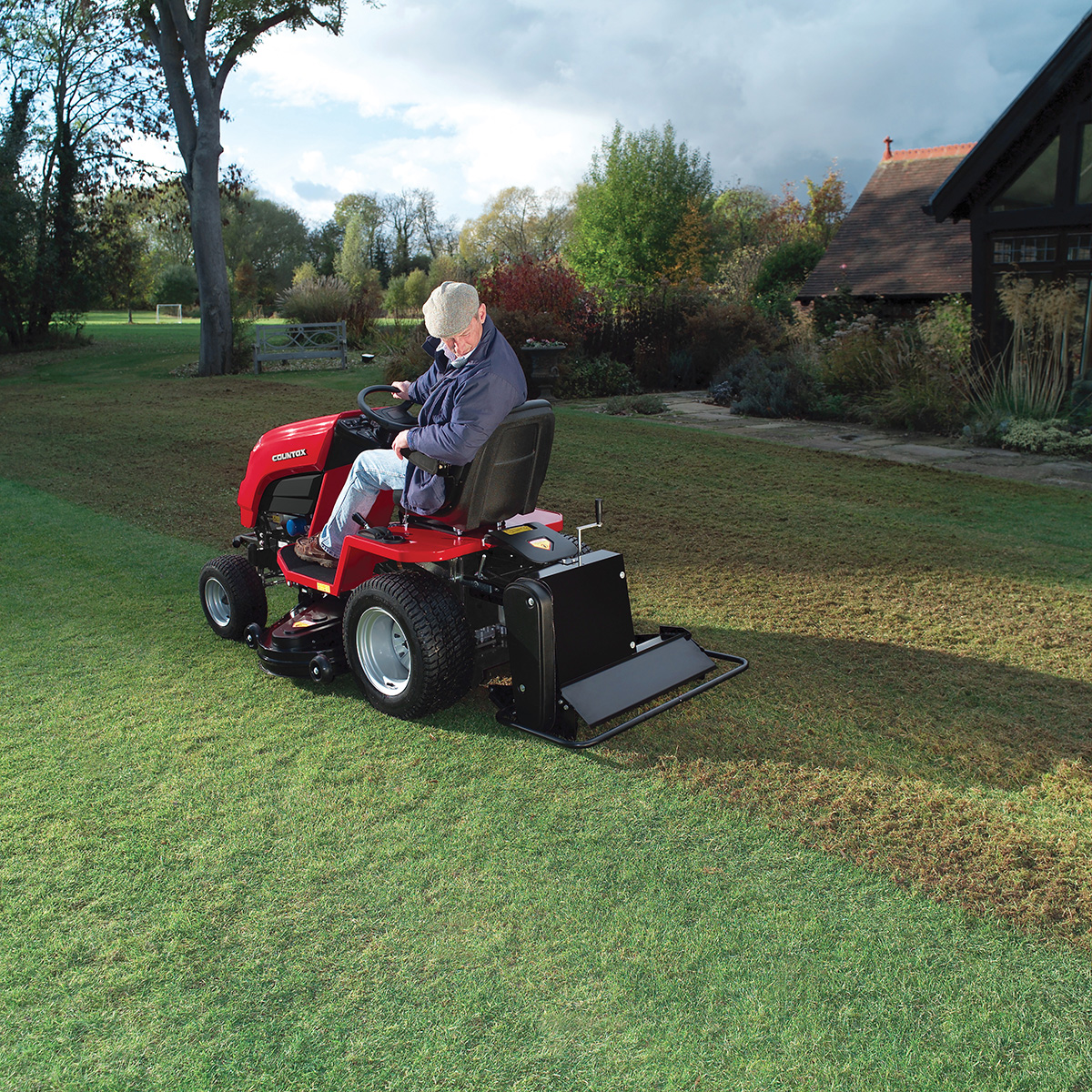
If you own the modern PGC+ system, an optional scarifier cassette can be fitted in place of the sweeping brush. Not only do the steel tines have a significant power and torque advantage (being driven by the tractor’s engine), but the PGC+ will also collect the material straight into the hopper – you just need to dump it on to the compost heap.
Using your Countax to scarify is almost effortless and much faster than just about any other method on the market. The PGC+ scarifier cassette is far cheaper than the equivalent walk-behind machine and takes up very little space in your garage.
Many Countax customers are opting to scarify their lawn using a scarifier attachment. To this day, after the PGC+, it remains our best selling accessory.
Immediately after scarifying, results can look brutal because the process reveals the actual state of your lawn. As previously mentioned, there is often far less grass than what appears from looking at it from a distance. Afterwards, the ground may look bare or patchy, perhaps even muddy; but don’t worry, treated properly it will recover very quickly.
You should aim to scarify twice a year. Target early Spring for the first pass. You want to clear out the thatch that has built up over the winter period. April is usually the best growing month for grass, so give the new grass its best chance for healthy growth.
In Autumn, you should scarify again, this time more material would have built up from a full mowing and growing season. It’s important that you put your lawn to bed for the winter. Remove as much thatch as you can, this will help the grass to stay healthy through the dormant months.
Using a scarifier attachment is very easy. It requires no special skill, just a small adjustment to the tine height so that the blades are just kissing the surface of the lawn. If you want some guidance, your dealer will always be willing to show you exactly what to do.
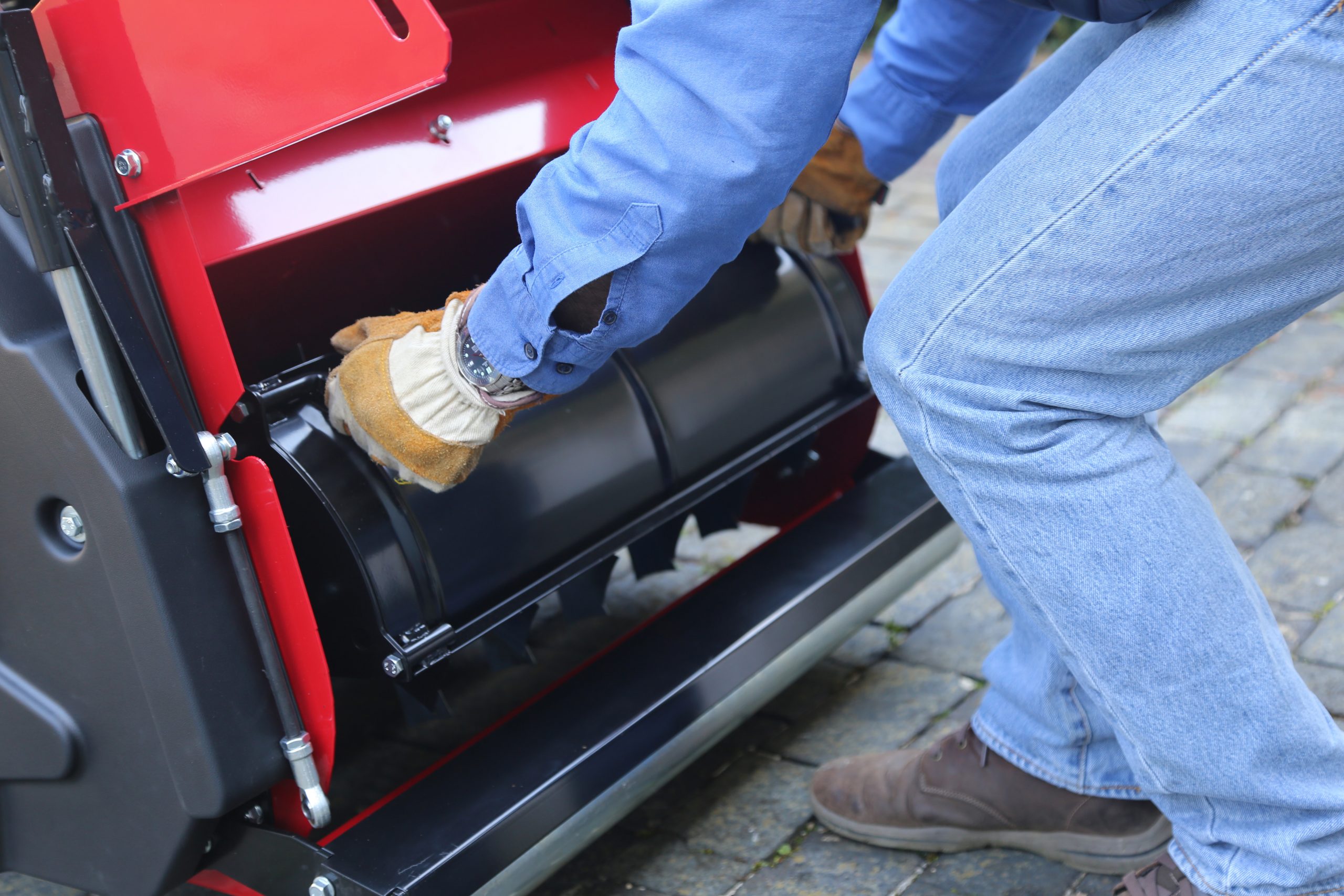
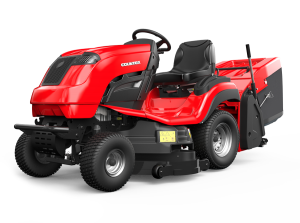 C Series
C Series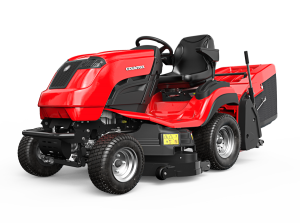 B Series 4WD
B Series 4WD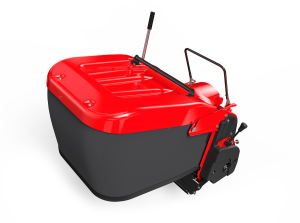 Accessories
Accessories
